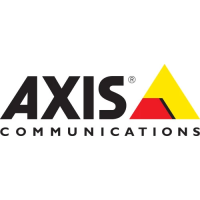
Do you have a question about the Axis Q6035 and is the answer not in the manual?
| Maximum resolution | 1920 x 1080 pixels |
|---|---|
| Supported video modes | 1080p, 720p |
| Video formats supported | H.264, M-JPEG, MPEG4 |
| Supported graphics resolutions | 1280 x 720 (HD 720), 1920 x 1080 (HD 1080) |
| Pan range | 0 - 360 ° |
| Tilt angle range | 0 - 180 ° |
| Camera shutter speed | 1/30000 - 1/4 s |
| Minimum illumination | 0.04 lx |
| Sensor type | CMOS |
| Optical sensor size | 1/2.8 \ |
| Digital zoom | 12 x |
| Optical zoom | 20 x |
| Focus adjustment | 1.6 - 3.5 |
| Focal length range | 4.7 - 94 mm |
| Security algorithms | 802.1x RADIUS |
| Video motion detection | Yes |
| Certification | EN 55022 B, EN 61000-3-2, EN 61000-3-3, EN 61000-6-1, EN 61000-6-2, EN 55024, FCC 15 B B, ICES-003 B, VCCI B, C AS/NZS CISPR 22, IEC 60529 IP52, IEC 60721-4-3 Class 3K3, 3M3 GS, UL, cUL, CE, FCC, VCCI, CB, KCC, UL-AR |
| Processor model | ARTPEC-3 |
| Placement supported | Indoor |
| Connectivity technology | Wired |
| Built-in HDD | No |
| Flash memory | 128 MB |
| Internal memory | 256 MB |
| Compatible memory cards | SD, SDHC |
| Form factor | Dome |
| Product color | White |
| Housing material | Metal |
| International Protection (IP) code | IP52 |
| Headphone outputs | 1 |
| Audio formats supported | AAC, MS-ADPCM, PCM |
| Cabling technology | 10/100Base-T(X) |
| Supported network protocols | IPv4/v6, HTTP, HTTPS*, QoS 3 DiffServ, FTP, SMTP, Bonjour, UPnP, SNMPv1/v2c/v3 (MIB-II), DNS, DynDNS, NTP, RTSP, RTP, TCP, UDP, IGMP, RTCP, ICMP, DHCP, ARP, SOCKS |
| Compliance industry standards | 802.3at |
| AC input voltage | 100-240 V |
| Power source type | PoE |
| AC input frequency | 50 Hz |
| Power consumption (typical) | 30 W |
| Operating temperature (T-T) | 0 - 50 °C |
| Operating relative humidity (H-H) | 20 - 80 % |
| Width | 198 mm |
|---|---|
| Height | 240 mm |
| Weight | 2600 g |
Details the physical connectors like RJ-45 and multi-connector for power, audio, and I/O.
Explains the meaning of different status LED colors and patterns for normal operation and errors.
Instructions for accessing the camera's interface via a web browser using IP address or hostname.
Steps for making the product accessible remotely over the internet via NAT traversal.
Guide on setting the initial administrator password for security via HTTP or HTTPS.
Overview of the camera's live video interface and its available controls and buttons.
Information on video streaming formats, protocols, and access methods for H.264 and MJPEG.
Methods for retrieving audio from the product using various players and APIs like VAPIX.
Provides shortcuts to essential initial product setup configurations like users, TCP/IP, and date.
Configuration options for optimizing video stream resolution, compression, and audio quality.
Customization options for the Live View page layout, viewer settings, and action buttons.
How to save/recall specific camera positions and configure automatic object tracking.
Setting up automated camera movements and advanced control features like limits and queues.
Procedures for uploading, installing, and managing third-party software on the camera.
Configuring servers to receive event notifications and image uploads via FTP or email.
Setting up triggers and actions for events like motion detection or scheduled times.
Setting up motion detection windows and parameters for triggering alarms.
Configuring alarms based on audio levels rising, falling, or passing a threshold.
Accessing and managing video recordings triggered by events to the SD card.
Setting up the camera for continuous video recording to the SD card.
Configuration for user access, IP filtering, HTTPS, network protocols, and security.
Management of SD card storage, ports, device settings, and product maintenance procedures.
Accessing troubleshooting, system overview, logs, and advanced configuration options.